Lists
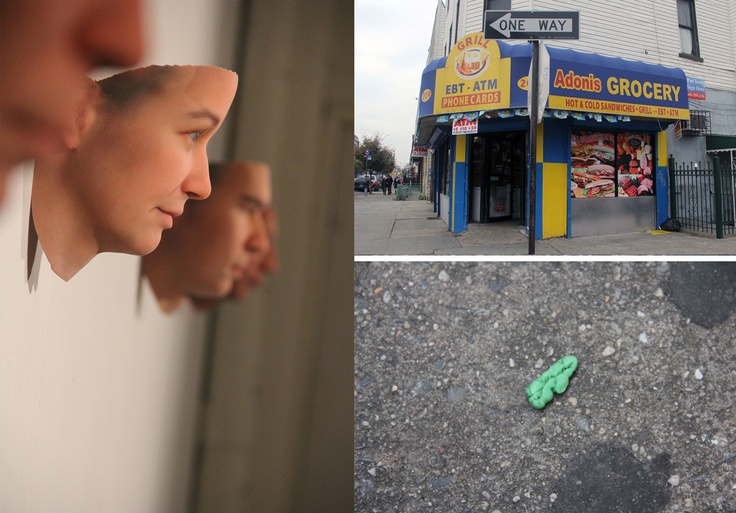
An announcement was released in 2012 that showed a series of experiments had resulted in the birth of 30 healthy genetically modified babies. Nita Farahany, Professor of Law and Philosophy and Professor of Genome Sciences & Policy at Duke University, stated that, "About one in 51,000 babies born have problems with their mitochondrial DNA that causes rare but incredibly serious diseases including heart failure, dementia, blindness, severe suffering, and death." The technology can save lives and Farahany stated that, "It is no different, in kind, from the many ways that we already engineer our children, from the partners we choose to parental screening to the supplements we take that impact our children and their fate."
Arguing for the prohibition of designer babies is Professor Sheldon Kimsky of Tufts University, and chair for the Council for Responsible Genetics. Kimsky stated his first objection is that, "No set of animal studies can ensure the safety and efficacy of human prenatal genetic modification. It is unimaginable that any human democratic society would permit such a trial with public or private funds; the risk would outweigh the benefits." He also argued that traits in a human cannot be controlled by just a few genes. He stated, "Traits like intelligence, personality, muscle tone, muscianship...are complex and not only involve dozens if not hundreds of genes but are the result of nutrition, social and environmental factors, genetic switches that are outside of the DNA and the gene-gene interactions that occur in human cells." The question we must ask is can human perfection be directed by manipulating genetics and if so should society allow it?
- 5 Animals That May Prove The Male Sex Is A Product Of Evolution
Many have asked the question: "Exactly which of our two visages is it, male or female, that came first?" Maybe both, or does just one sex contain all the components we need? It is similar to the question "Did the chicken come first, or the egg?"...
- How A Dog's Brain Responds To Humans
A dog's brain is only one-tenth the size of a human's brain and they are often attributed with the intelligence equivalent to that of a two year old child. Although recently, through technology like a MRI machine, researchers are learning there...
- 20 Awesome Real Animal Hybrids - Collection Of Amazing Photos
Peacock and Turkey HybridA hybrid animal is two animals from different species, but from the same genus, that are cross-bred. The resulting animal will be called a hybrid. This does not occur very often in nature and instead they are usually bred in captivity,...
- Farewell To Being Human
It was a simple enough concept - a vampire, a werewolf and a ghost live together to try to make a go of it by embracing their more human sides rather than their supernatural sides. Of course, the supernatural would always come rear its ugly head to mess...
- Closed: Giveaway! Supernatural: Fresh Meat
As you may have seen, I was lucky enough to interview the author of the newest Supernatural tie-in novel from Titan Books, Alice Henderson. But that's not all! Not only can you read the interview and get some inside scoop, you can also enter here...
Lists
10 Interesting and Controversial Ways People Have Used Human DNA
The use of human DNA in the scientific world is a very delicate and controversial topic. Bioethicists, scientists, and religious groups debate the morality of using human DNA with very convincing arguments. Yet, human DNA can also be used in creative and artistic ways that are less controversial. Here is a list of 10 Interesting and Controversial ways People have used Human DNA:
10 DNA Canvas Art Print
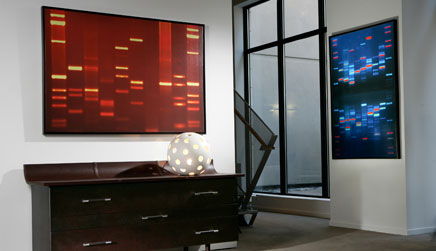
DNA 11 are the original creators of personalized DNA art prints, for those of us who literally want that personal touch. The selection and designs are numerous and other pieces are available such as DNA rugs, DNA waterwalls, and DNA wallpaper. They have now taken it a step further with DNA ancestry portraits where your genetic lineage is encoded to create a one-of-a-kind canvas art piece. Unlock the secrets of your ancestry with a personal, scannable bar-code that crosses over from physical to digital trade your maternal lineage. By scanning your augmented artwork with a camera-equipped smartphone your portrait becomes the gateway to a personalized ancestry page tracing your origins back thousands of years.
9 DNA Information Storage Device

One million bases of DNA sequence data is equivalent to 1 megabyte of computer data storage space, and there are approximately 3 billion bases in the DNA of every cell in your body. Your body is basically a super computer, and bio-engineers and geneticists at Harvard Wyss Institute can literally turn parts of the human body into tiny nano-disk drives. They have successfully stored 5.5 petabits- around 700 terabytes- in a single gram of DNA, destroying the previous DNA density record by a thousand times. The record was set by George Church and Sri Kosuri, who basically treat the DNA just like any other digital storage device. Instead of binary data being encoded as magnetic regions on a hard drive platter, strands of DNA that store 96 bits are synthesized, with each of the bases (TGAC) representing a binary value (T and G =1, A and C =0). To read the data stored in DNA, you simply sequence it, just as if you were sequencing the human genome, and convert each of the TGAC bases back into binary.
With DNA, there is unlimited storage space and it can survive for a very long time under the right conditions. Synthesizing and sequencing DNA is common place today while not long ago it took the original Human Genome Project years to analyze a single human genome. Luckily, modern lab equipment can now do it within just a few hours. We can now fit 14,000 Blu-ray disks in a droplet of DNA that would fit on the tip of a pinky finger. We can look forward to a technology that will allow us to record anything and everything without reservation. Currently, there are limits to what can be recorded because we simply don't have the storage capacity to record everything all the time and store the information safely. With this technology the world can be blanketed cameras that record every moment for all eternity, and store it on just a tiny drop of DNA. It is now also possible to store data on living cells like skin, for a time limit of a few hours, but in the future we may not be restricted to a time limit.
With DNA, there is unlimited storage space and it can survive for a very long time under the right conditions. Synthesizing and sequencing DNA is common place today while not long ago it took the original Human Genome Project years to analyze a single human genome. Luckily, modern lab equipment can now do it within just a few hours. We can now fit 14,000 Blu-ray disks in a droplet of DNA that would fit on the tip of a pinky finger. We can look forward to a technology that will allow us to record anything and everything without reservation. Currently, there are limits to what can be recorded because we simply don't have the storage capacity to record everything all the time and store the information safely. With this technology the world can be blanketed cameras that record every moment for all eternity, and store it on just a tiny drop of DNA. It is now also possible to store data on living cells like skin, for a time limit of a few hours, but in the future we may not be restricted to a time limit.
8 Deep Space DNA
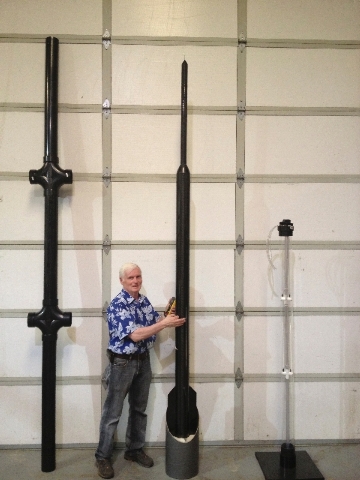
Peter Poulsen, who has a doctorate in applied sciences, recently announced to the world from a Star Trek Convention his plans to use rockets to carry DNA into deep space. For the low-low price of $495 your DNA cocktail can climb aboard for future space aliens to clone and probe you in a state of perpetual torture for all eternity.
Sometime in 2015, Poulsen hopes to start sending small rockets packed with DNA into deep space. Once there, the rockets will orbit the sun and store our DNA for later discovery or recovery. Poulsen's enterprise, the SAEL-Away Adventure, will even send your favorite critter's DNA into orbit. Poulsen wont be using traditional methods used with space burials instead he claims he has secured a contract with the Panamanian Government that will allow him to use a former military base for his operations. There he wants to deploy a cannon to propel his rockets into orbit. The rockets will also carry a beacon aboard so that customers can track their DNA on it's space flight from the comforts of home.
Sometime in 2015, Poulsen hopes to start sending small rockets packed with DNA into deep space. Once there, the rockets will orbit the sun and store our DNA for later discovery or recovery. Poulsen's enterprise, the SAEL-Away Adventure, will even send your favorite critter's DNA into orbit. Poulsen wont be using traditional methods used with space burials instead he claims he has secured a contract with the Panamanian Government that will allow him to use a former military base for his operations. There he wants to deploy a cannon to propel his rockets into orbit. The rockets will also carry a beacon aboard so that customers can track their DNA on it's space flight from the comforts of home.
7 3-D Portraits made from Human DNA

Heather Dewey-Hagborg, an artist, noticed a piece of hair stuck to a photo frame one day and genius struck. She tried to imagine who the hair belonged to, what did this person look like? To answer these questions she decided to combine science with art, the project "Strange Visions" had begun. Heather collected cigarette butts, locks of hair, and even chewed bubblegum from public places and sampled the DNA from these items to create a 3-D portrait of how the owners of the DNA might look.
She compared the DNA to a known database of DNA strings, that show specific attributes of a person like the spacing between eyes, and the probability to be overweight. She then used the 3D Basel Morphable Module to create a 3-D portrait, which was printed on a 3-D printer, revealing a life-like bust of the actual law breaking litterer. The project has even received offers from several police investigators to help identify missing persons. In today's world, we are no longer just a face in the crowd.
6 DNA Mechanical Devices (DNA Robots)
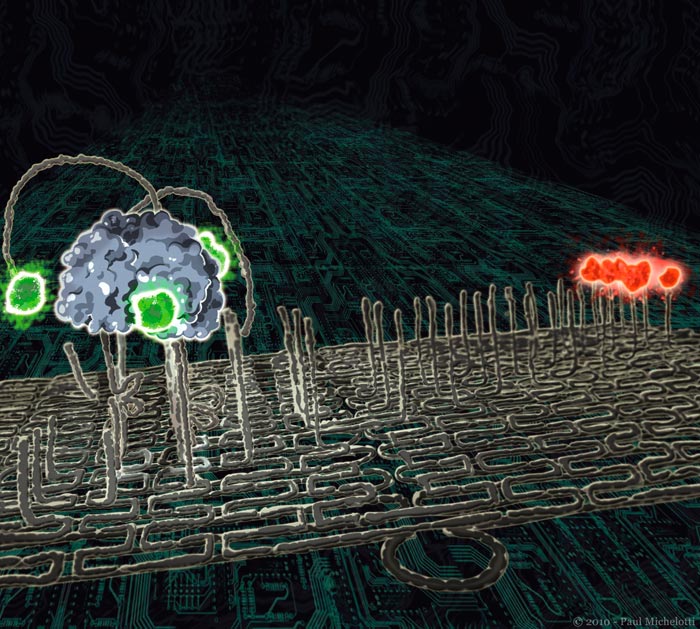
DNA nanotechnology uses the pairing of the DNA double helix to assemble more complex structures. The DNA can be bent into shapes such as a cube or an octahedron, and once the DNA is shaped into suitably rigid motifs it can be stimulated with certain proteins and other DNA to display programmable features.
The original goal behind this science was to organize nano-electronics and even DNA computation. The key to this technology is the static nature of DNA, with it's ability to change shape (sometimes called DNA origami) in response to external stimuli. In principle, this means that the DNA can act as a functional machine. When the DNA is stimulated with certain proteins it will move in a predictable motion, sometimes even rotating along a DNA track. These DNA mechanical devices, that can move along a DNA track, are called DNA Walkers. It is also speculated that DNA rotary devices can be created working very similarly to the way a clock works or a train on it's tracks. The scientists can then command their army of clockwork DNA to do their bidding! This technology can be put to use in the medical field possibly locating cancers in the human body and seeking them out for destruction, while leaving the healthy cells untouched. The possibilities are endless and this technology could revolutionize health care as we know it.
The original goal behind this science was to organize nano-electronics and even DNA computation. The key to this technology is the static nature of DNA, with it's ability to change shape (sometimes called DNA origami) in response to external stimuli. In principle, this means that the DNA can act as a functional machine. When the DNA is stimulated with certain proteins it will move in a predictable motion, sometimes even rotating along a DNA track. These DNA mechanical devices, that can move along a DNA track, are called DNA Walkers. It is also speculated that DNA rotary devices can be created working very similarly to the way a clock works or a train on it's tracks. The scientists can then command their army of clockwork DNA to do their bidding! This technology can be put to use in the medical field possibly locating cancers in the human body and seeking them out for destruction, while leaving the healthy cells untouched. The possibilities are endless and this technology could revolutionize health care as we know it.
5 DNA Fingerprinting

DNA Fingerprinting dates back to 1985, when it was first developed by Sir Alec Jeffrys. It is considered the greatest achievement in forensic science since the development of fingerprint identification, and DNA Fingerprinting has been highly successful in the identification of criminal suspects, the resolution of paternity issues, and the identification of human remains. It has also facilitated the creation of many amusing Jerry Springer episodes. The use of DNA evidence in criminal court cases seriously tipped the scale between perpetrators and the law.
The masses first began to hear about DNA used as evidence in the popular 1995 O.J. Simpson trial. In the past, many convicted criminals have been exonerated due to mishandling of DNA evidence in crime labs, sometimes decades after the actual crime was committed. The Innocence Project is a national litigation and public policy organization dedicated to exonerating wrongfully convicted individuals through DNA testing. Of the 311 people exonerated through DNA testing, 18 have served time on death row. DNA fingerprinting has heralded many needed improvements to several of the world's leading criminal justice systems. DNA even outed Anna Anderson of Russia, who claimed to be Grand Duchess Anastasia fooling even royalty until her death in 1984 when her DNA was sampled. DNA fingerprinting showed that her DNA did not match the patterns of living relatives of the Romanov royal family.
The masses first began to hear about DNA used as evidence in the popular 1995 O.J. Simpson trial. In the past, many convicted criminals have been exonerated due to mishandling of DNA evidence in crime labs, sometimes decades after the actual crime was committed. The Innocence Project is a national litigation and public policy organization dedicated to exonerating wrongfully convicted individuals through DNA testing. Of the 311 people exonerated through DNA testing, 18 have served time on death row. DNA fingerprinting has heralded many needed improvements to several of the world's leading criminal justice systems. DNA even outed Anna Anderson of Russia, who claimed to be Grand Duchess Anastasia fooling even royalty until her death in 1984 when her DNA was sampled. DNA fingerprinting showed that her DNA did not match the patterns of living relatives of the Romanov royal family.
4 Human DNA Bank
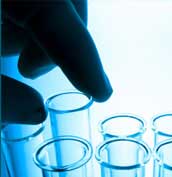
The world's second and Asia's first Human DNA Bank has been set up at the Biotech Park in Uttar Pradesh's Lucknow district. "DNA Identification System (DIS) will be one of the most important functions of the DNA Bank that will facilitate establishing identity of individuals within a few seconds," Biotech Park's CEO, P.K. Seth, commented. "The members of the Human DNA Bank will receive a microchip based DNA card containing information of their fingerprints, and other anthropological details," said Seth.
The information can then be read through special readers, that will be installed at important places across the globe. Strategically place in areas like airports and borders. Although it seems very sketchy like dystopianism, IBS director Saeed Ahmad assures us it can be used for less nefarious purposes. He uses examples like establishing the identity of an unconscious person. He also stated the card can be used as a check point at immigration counters or at airports. The beginnings of a brave new world.
The information can then be read through special readers, that will be installed at important places across the globe. Strategically place in areas like airports and borders. Although it seems very sketchy like dystopianism, IBS director Saeed Ahmad assures us it can be used for less nefarious purposes. He uses examples like establishing the identity of an unconscious person. He also stated the card can be used as a check point at immigration counters or at airports. The beginnings of a brave new world.
3 Human Genome Project

The Human Genome is the complete set of genetic information for homo-sapiens. This information is naturally stored in our DNA, and we carry a map through the ages of every person we have descended from, in every cell of our bodies. The Human Genome Project endeavored to map all of our genes together, known as the human genome. The project began to sequence and map our individual genomes, to create a blueprint for the history of our species. As of 2012, thousands of human genomes have been completely sequenced. The project has and will continue to lead to advances in diagnosis and treatment of diseases, and to new insights in many fields of biology including human evolution. In fact, for that less money than expected, we can purchase DNA tests for ancestry as far back as hundreds of thousands of years. Then zip on over to ancestry.com and link our test for our more immediate ancestry, the possibilities are endless and can also be very useful.
David Agus, an oncologist and cancer researcher at the University of Southern California, started Navigenics, which is a company that does DNA testing to determine whether a person is likely to develop a disease. Dr. Agus encourages everyone to get tested as an early warning system, to delay onset, or even prevent certain diseases. That's precisely what happened to Mari Baker, the company's CEO. When her results revealed a 5-times-greater risk of celiac disease, follow-up testing ordered by her physician confirmed she did in fact have the digestive disease, and had been causing many of her health complaints. Celiac disease is caused by an intolerance to gluten, a protein in wheat, rye, and barley. After changing her diet to gluten-free Baker stated that she feels so much healthier, like she avoided something potentially serious. Unfortunately, test results aren't always so clear cut, sometimes predicting male pattern baldness in men with full heads of lustrous hair. Although, over the next decade, tests are guaranteed to become more affordable and more accurate.
David Agus, an oncologist and cancer researcher at the University of Southern California, started Navigenics, which is a company that does DNA testing to determine whether a person is likely to develop a disease. Dr. Agus encourages everyone to get tested as an early warning system, to delay onset, or even prevent certain diseases. That's precisely what happened to Mari Baker, the company's CEO. When her results revealed a 5-times-greater risk of celiac disease, follow-up testing ordered by her physician confirmed she did in fact have the digestive disease, and had been causing many of her health complaints. Celiac disease is caused by an intolerance to gluten, a protein in wheat, rye, and barley. After changing her diet to gluten-free Baker stated that she feels so much healthier, like she avoided something potentially serious. Unfortunately, test results aren't always so clear cut, sometimes predicting male pattern baldness in men with full heads of lustrous hair. Although, over the next decade, tests are guaranteed to become more affordable and more accurate.
2 Genetically Engineered Babies

Arguing for the prohibition of designer babies is Professor Sheldon Kimsky of Tufts University, and chair for the Council for Responsible Genetics. Kimsky stated his first objection is that, "No set of animal studies can ensure the safety and efficacy of human prenatal genetic modification. It is unimaginable that any human democratic society would permit such a trial with public or private funds; the risk would outweigh the benefits." He also argued that traits in a human cannot be controlled by just a few genes. He stated, "Traits like intelligence, personality, muscle tone, muscianship...are complex and not only involve dozens if not hundreds of genes but are the result of nutrition, social and environmental factors, genetic switches that are outside of the DNA and the gene-gene interactions that occur in human cells." The question we must ask is can human perfection be directed by manipulating genetics and if so should society allow it?
1 Human- Animal Chimeras (Para-human)

Recently, a Japanese team released the news that they are well on their way to creating a human-animal hybrid. Pigs with human organs, have been mixed up in their labs, ensuring outcries of bio-ethicists all over the globe. You might be surprised to learn that the UK Academy of Medical Sciences released a report on "animals containing human material" and it concluded that most research on chimeras is permitted by existing UK laws. It also stated that the experiments that are unlawful due ethical objections are breeding any animal that has human sperm or eggs, or creating a non-human primate that has a humanized brain. The Japanese claim their techniques rule out creating an animal with human gonads or grey matter, but apparently these things can happen. To "reassure" us, they have also spoken about using primates if their pig-humans fail.
Interestingly, since the Human Fertilization Embryology act of 2008, three colleges were licensed to carry out the creation of a variety of hybrids. Such hybrids include an animal egg fertilized with a human sperm, or Cybrids, which is a human nucleus implanted into an animal cell. Chimeras are human cells mixed with animal embryos.
bioethics, chimera, designer babies, dna, dna -art, dna banks, dna fingerprinting, genetically altered, human dna, interesting lists, bioethics, chimera, designer babies, dna, dna -art, dna banks, dna fingerprinting, genetically altered, human dna, interesting lists, bioethics, chimera, designer babies, dna, dna -art, dna banks, dna fingerprinting, genetically altered, human dna, interesting lists, morganslists, bioethics, chimera, designer babies, dna, dna -art, dna banks, dna fingerprinting, genetically altered, human dna, interesting lists, morganslists, bioethics, chimera, designer babies, dna, dna -art, dna banks, dna fingerprinting, genetically altered, human dna, interesting lists, morganslists, bioethics, chimera, designer babies, dna, dna -art, dna banks, dna fingerprinting, genetically altered, human dna, interesting lists, morganslists, bioethics, chimera, designer babies, dna, dna -art, dna banks, dna fingerprinting, genetically altered, human dna, interesting lists, morganslists, bioethics, chimera, designer babies, dna, dna -art, dna banks, dna fingerprinting, genetically altered, human dna, interesting lists, morganslists, bioethics, chimera, designer babies, dna, dna -art, dna banks, dna fingerprinting, genetically altered, human dna, interesting lists, morganslists, bioethics, chimera, designer babies, dna, dna -art, dna banks, dna fingerprinting, genetically altered, human dna, interesting lists, morganslists, bioethics, chimera, designer babies, dna, dna -art, dna banks, dna fingerprinting, genetically altered, human dna, interesting lists, morganslists, morganslists.com, morganslists.com, morganslists.com, morgans lists, morgans lists, morgans, lists, lists, lists, lists, lists, bioethics, chimera, designer babies, dna, dna -art, dna banks, dna fingerprinting, genetically altered, human dna, interesting lists, morganslists, bioethics, chimera, designer babies, dna, dna -art, dna banks, dna fingerprinting, genetically altered, human dna, interesting lists, morganslists, bioethics, chimera, designer babies, dna, dna -art, dna banks, dna fingerprinting, genetically altered, human dna, interesting lists, morganslists
bioethics, chimera, designer babies, dna, dna -art, dna banks, dna fingerprinting, genetically altered, human dna, interesting lists, bioethics, chimera, designer babies, dna, dna -art, dna banks, dna fingerprinting, genetically altered, human dna, interesting lists, bioethics, chimera, designer babies, dna, dna -art, dna banks, dna fingerprinting, genetically altered, human dna, interesting lists, morganslists, bioethics, chimera, designer babies, dna, dna -art, dna banks, dna fingerprinting, genetically altered, human dna, interesting lists, morganslists, bioethics, chimera, designer babies, dna, dna -art, dna banks, dna fingerprinting, genetically altered, human dna, interesting lists, morganslists, bioethics, chimera, designer babies, dna, dna -art, dna banks, dna fingerprinting, genetically altered, human dna, interesting lists, morganslists, bioethics, chimera, designer babies, dna, dna -art, dna banks, dna fingerprinting, genetically altered, human dna, interesting lists, morganslists, bioethics, chimera, designer babies, dna, dna -art, dna banks, dna fingerprinting, genetically altered, human dna, interesting lists, morganslists, bioethics, chimera, designer babies, dna, dna -art, dna banks, dna fingerprinting, genetically altered, human dna, interesting lists, morganslists, bioethics, chimera, designer babies, dna, dna -art, dna banks, dna fingerprinting, genetically altered, human dna, interesting lists, morganslists, bioethics, chimera, designer babies, dna, dna -art, dna banks, dna fingerprinting, genetically altered, human dna, interesting lists, morganslists, morganslists.com, morganslists.com, morganslists.com, morgans lists, morgans lists, morgans, lists, lists, lists, lists, lists, bioethics, chimera, designer babies, dna, dna -art, dna banks, dna fingerprinting, genetically altered, human dna, interesting lists, morganslists, bioethics, chimera, designer babies, dna, dna -art, dna banks, dna fingerprinting, genetically altered, human dna, interesting lists, morganslists, bioethics, chimera, designer babies, dna, dna -art, dna banks, dna fingerprinting, genetically altered, human dna, interesting lists, morganslists
- 5 Animals That May Prove The Male Sex Is A Product Of Evolution
Many have asked the question: "Exactly which of our two visages is it, male or female, that came first?" Maybe both, or does just one sex contain all the components we need? It is similar to the question "Did the chicken come first, or the egg?"...
- How A Dog's Brain Responds To Humans
A dog's brain is only one-tenth the size of a human's brain and they are often attributed with the intelligence equivalent to that of a two year old child. Although recently, through technology like a MRI machine, researchers are learning there...
- 20 Awesome Real Animal Hybrids - Collection Of Amazing Photos
Peacock and Turkey HybridA hybrid animal is two animals from different species, but from the same genus, that are cross-bred. The resulting animal will be called a hybrid. This does not occur very often in nature and instead they are usually bred in captivity,...
- Farewell To Being Human
It was a simple enough concept - a vampire, a werewolf and a ghost live together to try to make a go of it by embracing their more human sides rather than their supernatural sides. Of course, the supernatural would always come rear its ugly head to mess...
- Closed: Giveaway! Supernatural: Fresh Meat
As you may have seen, I was lucky enough to interview the author of the newest Supernatural tie-in novel from Titan Books, Alice Henderson. But that's not all! Not only can you read the interview and get some inside scoop, you can also enter here...

